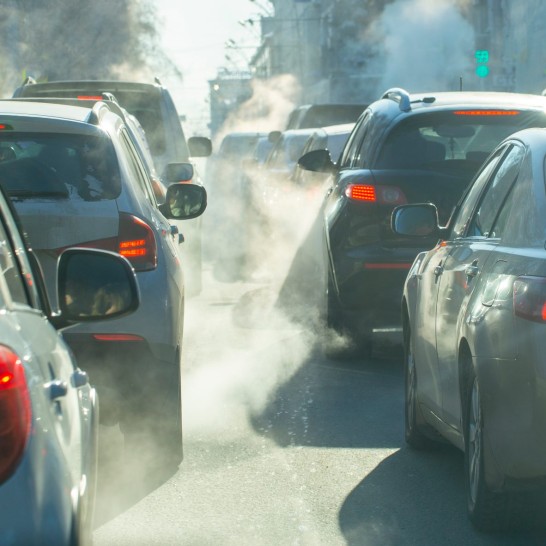In one of the first studies of its kind done in the United States, a University of Georgia professor teamed up with faculty at Emory University to research the effect thunderstorms can have on people with asthma and allergies.
Andrew Grundstein, a professor in the Department of Geography at UGA and the lead author of the study entitled “Thunderstorm-associated asthma in Atlanta, Georgia,” said people generally think of rain as a good thing for pollen allergies and asthma, and normally they would be right. But research showed that when rain escalates to a thunderstorm, it can actually exacerbate symptoms.
“Certain kinds of pollen, like grass pollens, will get pulled into the thunderstorm clouds, the pollen greens will rupture and produce very tiny ones,” he said. “People who inhale those small particles, they can get deep into your lungs.”
According to the study, this phenomenon is possible because thunderstorms have an updraft, causing allergens to be transported off the ground and into the air.
“Our findings corroborate previous reports of an association of thunderstorm activity with asthma exacerbation,” the study reads. “Furthermore, our results provide preliminary evidence in support of rainfall and wind gusts playing important roles in this association.”
The link between thunderstorms and an increase in asthma symptoms may pose a problem for asthmatics and allergy sufferers in Georgia. According to the National Weather Service, thunderstorms are most common in spring and summer months in north Georgia. Additionally, WeatherSpark found thunderstorms occur on an average of 31 percent of days that rain in Atlanta.
Grundstein, who has a research specialty in climatology, said he first came across an article about thunderstorm asthma in foreign countries when teaching a graduate seminar years ago. Since then, he has worked with a group of health scientists at Emory to test the theory in metro Atlanta.
“We helped with the information on the weather conditions,” Grundstein said. “They had a big data set of people seeking medical attention in emergency rooms, so we combined our information with their information.”
He said they basically looked at emergency room data in Atlanta to see how it corresponded with thunderstorms in the area. What they found was a three percent influx in people going to emergency rooms with asthma symptoms after thunderstorms. Grundstein said that represents a low estimate, as there are likely those who suffer from thunderstorm asthma who treat themselves without going to a hospital.
But in places such as England, where three percent of the population is still a large part of the population, that can cause problems, Grundstein said.
“One of the things that’s really important is in a lot of the states in England where you have these big outbreaks, all these people have asthma attacks and they rush to the emergency rooms and get overloaded,” he said. “Being aware in thunderstorms [that] these things could happen, you might help them prepare better.”
Grundstein said the people who run into trouble are usually not those with severe asthma, but those with mild asthma paired with pollen allergies because those with frequent asthma attacks have and know how to use medication.
Grundstein said he recommends people with asthma, especially those with pollen allergies, stay informed about symptoms and treatments.
“Talk to your doctor about an appropriate kind of regiment to control it and what to do if you do have an asthma attack,” he said. “It might be helpful to stay indoors during the thunderstorm.”
###
By Taylor West
August 20, 2014
redandblack.com
You may also be interested in . . .
Am I Suffering from Allergies? Or Something Else?
There is a wide range of variability from person to person when it comes to allergies. The unique circumstances of each person and their environment as…
Allergies, Asthma, and Air Quality
As we move into the summer months, it is important to understand the connection between allergies, asthma, and air quality. While air pollution does not…
Independence from Summer Allergies
The Fourth of July is only one week away and that likely means many are making or finalizing plans to be outside. Are you planning to be the grill master?…



